
How To Tell If You Have A Broken Neck JOI Jacksonville Orthopaedic Institute
An occipital bun, also called an occipital spur, occipital knob, chignon hook or inion hook, is a prominent bulge or projection of the occipital bone at the back of the skull. It is important in scientific descriptions of classic Neanderthal crania. [1]

Back View Of Human Skull Stock Photo 277946075 Shutterstock
Great Prices On Millions Of Items. Get It On eBay. Over 90% Of All Products On eBay Are Brand New. Big Brands, Top Retailers.

Bone Development Some Concise Notes for Review Interactive Biology, with Leslie Samuel
Occipital bone: the bone that forms the back of the head and connects with the occipital condyles and foramen magnum — skeletal structures located on the underside of the skull, near the.

Skull_Back stock illustration. Illustration of intelligence 44728798
The cranium (skull) is the skeletal structure of the head that supports the face and protects the brain. It is subdivided into the facial bones and the brain case, or cranial vault. The facial bones underlie the facial structures, form the nasal cavity, enclose the eyeballs, and support the teeth of the upper and lower jaws. The rounded brain.

skull back Google Search Skull anatomy, Human skull anatomy, Human skull
HHS Vulnerability Disclosure. The cranium (from the Greek word krania, meaning skull) is the most cephalad aspect of the axial skeleton. The cranium, or skull, is composed of 22 bones anis d divided into two regions: the neurocranium (which protects the brain) and the viscerocranium (which forms the face).

the human skull back view with labels
Structure Anatomy of the human head The human head consists of a fleshy outer portion, which surrounds the bony skull. The brain is enclosed within the skull. There are 22 bones in the human head. The head rests on the neck, and the seven cervical vertebrae support it.

3d male human skull bone
The occipital bone ( / ˌɒkˈsɪpɪtəl /) is a cranial dermal bone and the main bone of the occiput (back and lower part of the skull ). It is trapezoidal in shape and curved on itself like a shallow dish. The occipital bone overlies the occipital lobes of the cerebrum.
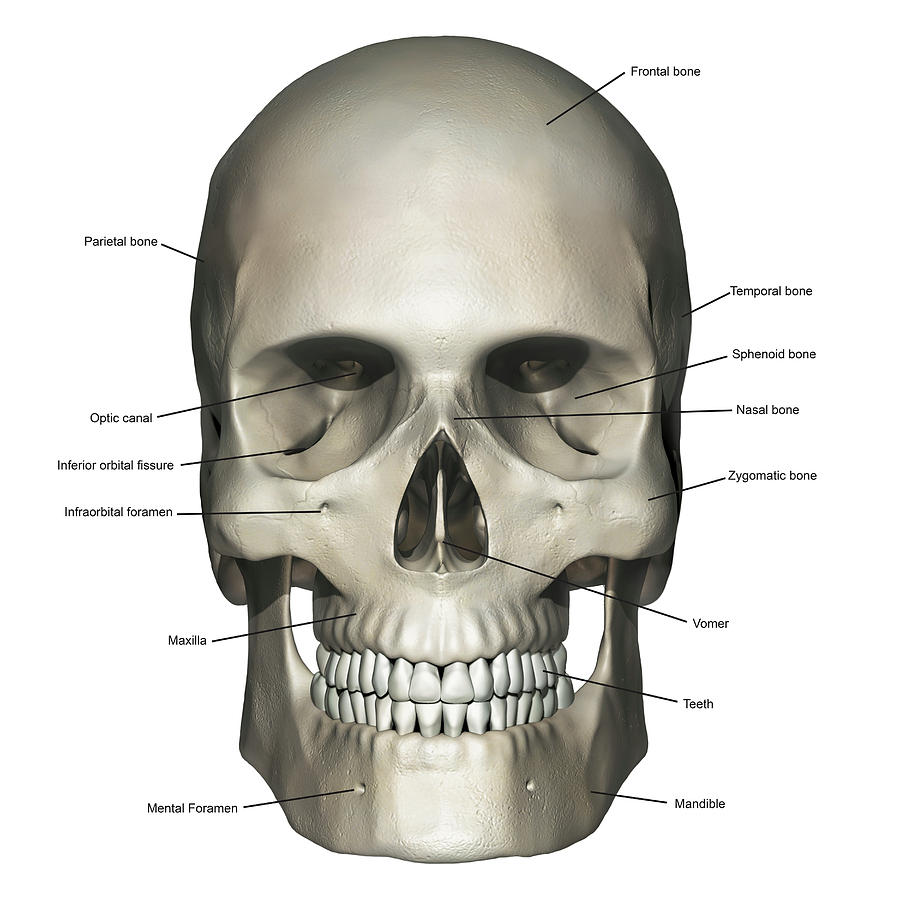
Anterior View Of Human Skull Anatomy Photograph by Alayna Guza Fine Art America
The structure of the skull is a highly detailed and complex design. In all, there are 22 bones comprising the entire skull, excluding the 3 pairs of ossicles located in the inner ear. The bones of the skull are highly irregular. Most of the bones of the skull are held together by firm, immovable fibrous joints called sutures or synarthroses.
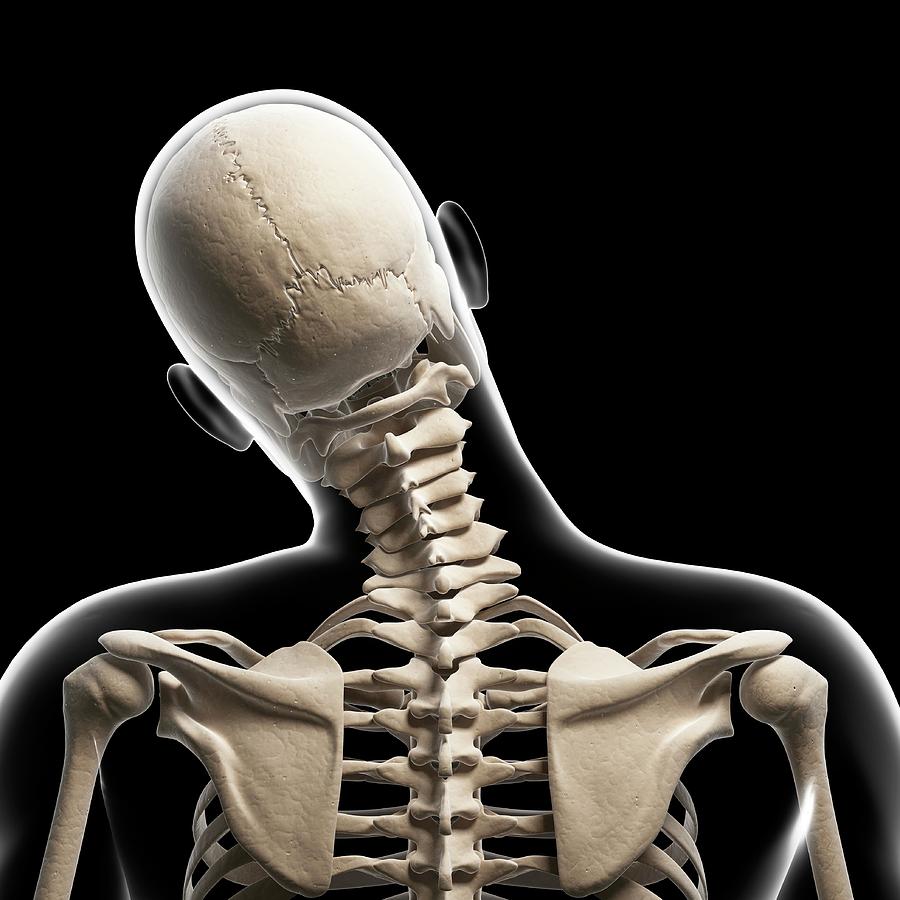
Human Skull And Neck Bones Photograph by Sebastian Kaulitzki Pixels
Vomer (1) Mandible (1) Here, the hyoid bone, and the ear ossicles (middle ear bones) are also included in the facial bones. The three paired middle ear bones are malleus , incus, and stapes. Apart from forming the face, these bones are responsible for protecting and supporting the soft tissues in the area.

skull back anatomy Google Search Skull anatomy, Anatomy bones, Human anatomy
The occipital bone is a flat, trapezoid-shaped bone that houses the back part of the brain. It is located at the lower back of the cranium and is one of seven bones that form your skull. This article will review the structure and function of the occipital bone of the skull, as well as problems that can affect the bone.
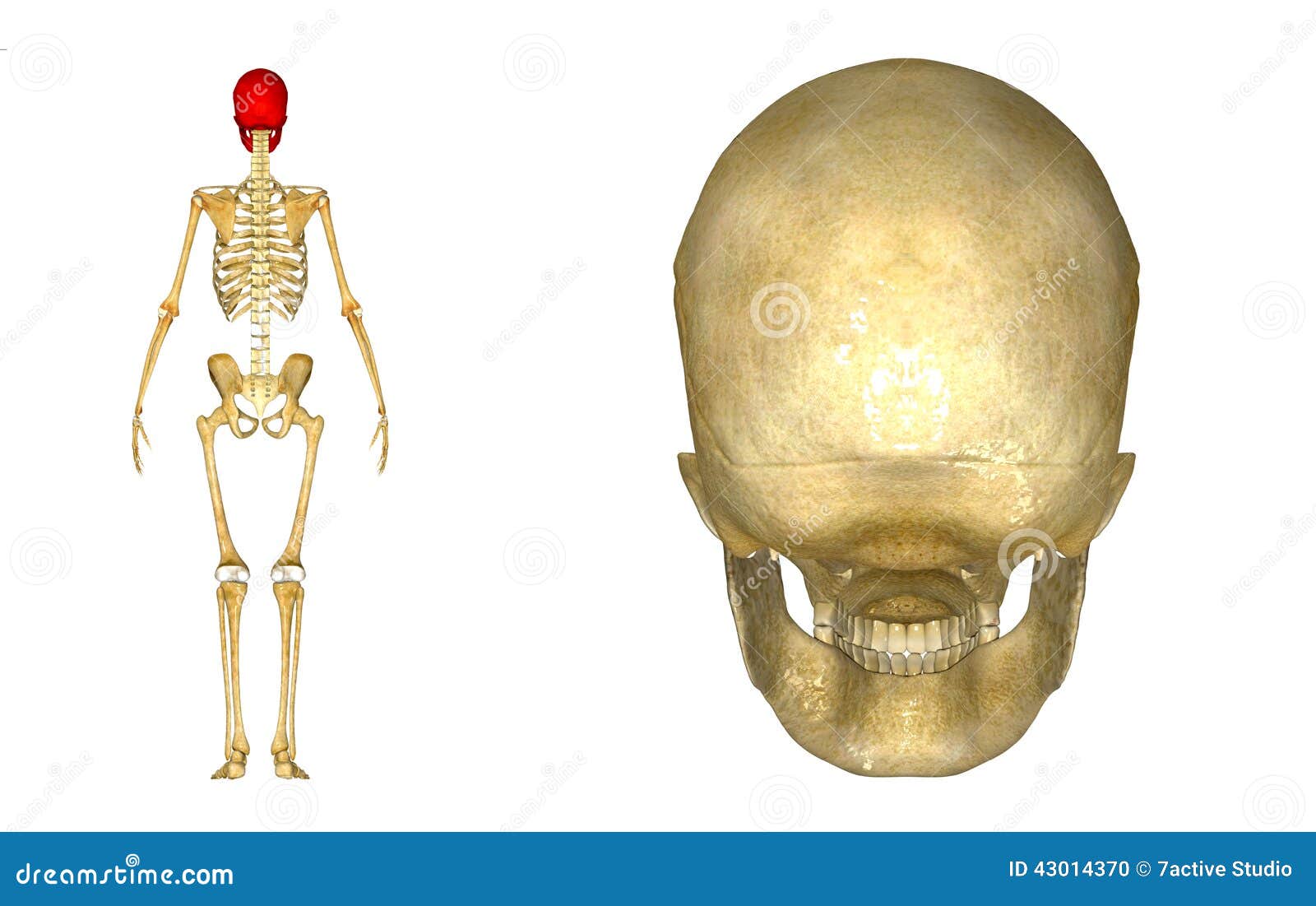
Human Skull Back Stock Illustration Image 43014370
It is a complex anatomical structure weighing up to five kilograms that rests on the bony skull and in turn, the neck. In addition to the evident ears, eyes, nose, and mouth, the head supports a variety of other important structures: Muscles of mastication Facial muscles Salivary glands Arteries Nerves

Human Skull Diagrams 101 Diagrams
The skull is a bony structure that supports the face and forms a protective cavity for the brain. It is comprised of many bones, which are formed by intramembranous ossification, and joined by sutures (fibrous joints).
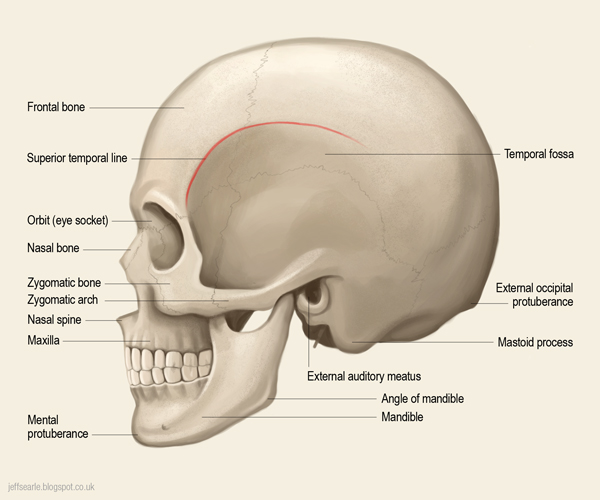
Jeff Searle The human skull
Browse 1,600 back of human skull photos and images available, or start a new search to explore more photos and images. playing card design - back of human skull stock illustrations playing card back side - back of human skull stock illustrations upper body bones, artwork - back of human skull stock illustrations
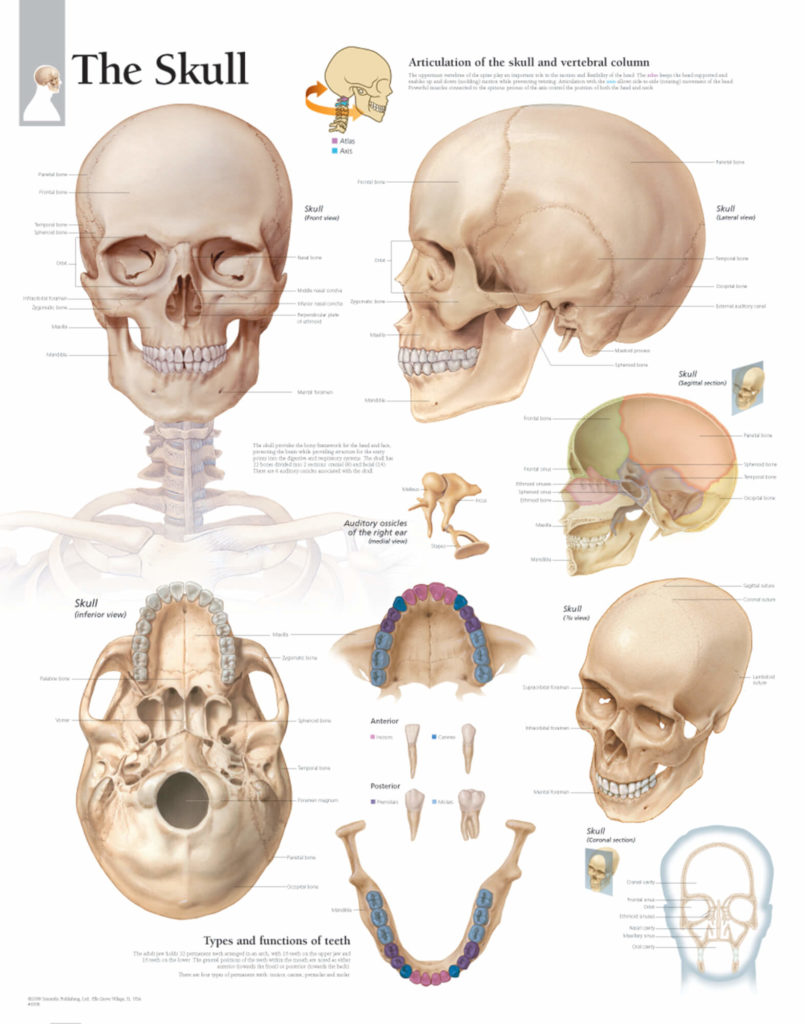
The Skeletal System Scientific Publishing
skull, skeletal framework of the head of vertebrates, composed of bones or cartilage, which form a unit that protects the brain and some sense organs. The upper jaw, but not the lower, is part of the skull. The human cranium, the part that contains the brain, is globular and relatively large in comparison with the face.
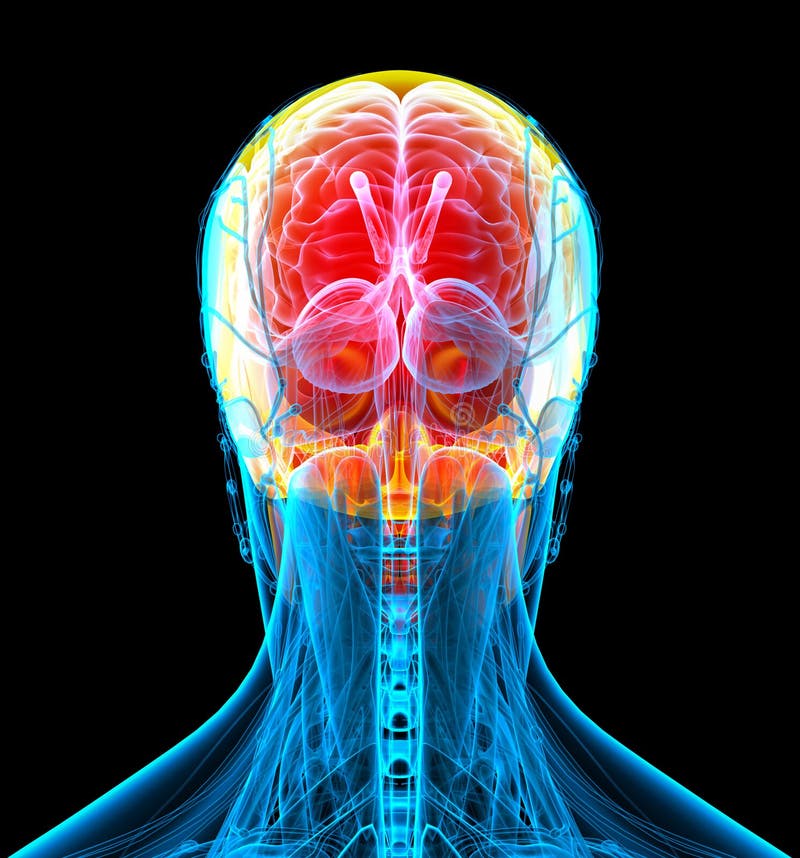
Human Skull Back View Stock Illustrations 354 Human Skull Back View Stock Illustrations
Length and width of the skull, shape of the eye orbits, size and shape of the nasal opening, shape and slope of the nasal bone above the opening, and general slope of the skull from forehead to chin are all important in determining race. European Skull Characteristics

Human Skull Scattered Back View Stock Illustration Illustration of lateral, health 76445979
The skull is the skeletal structure of the head that supports the face and protects the brain. It is subdivided into the facial bones and the cranium, or cranial vault ( Figure 7.3.1 ). The facial bones underlie the facial structures, form the nasal cavity, enclose the eyeballs, and support the teeth of the upper and lower jaws.